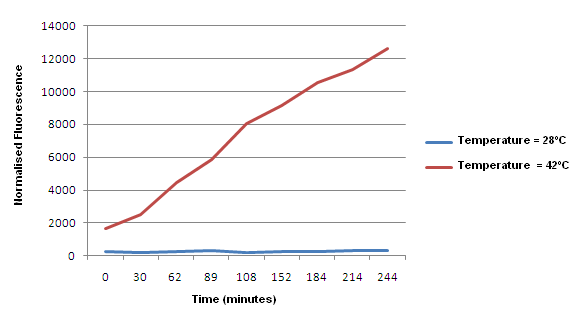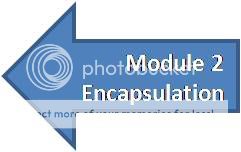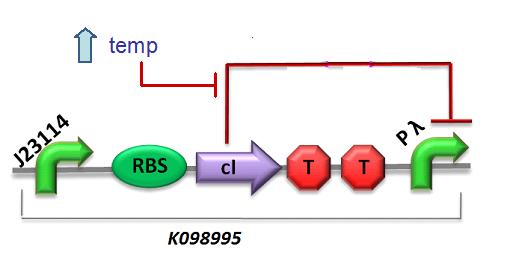Team:Imperial College London/Thermoinduction
From 2009.igem.org
(→Rationale) |
|||
| (36 intermediate revisions not shown) | |||
| Line 1: | Line 1: | ||
{{Imperial/09/TemplateTop}} | {{Imperial/09/TemplateTop}} | ||
| - | |||
| - | |||
| - | |||
<html> | <html> | ||
<center> | <center> | ||
<div class="highslide-gallery"> | <div class="highslide-gallery"> | ||
| - | <a href=" | + | <a href="https://static.igem.org/mediawiki/2009/0/02/II09_MapIndicator_Thermoinduction.png" class="highslide" onclick="return hs.expand(this, config1)" title="After encapsulation is complete, the temperature is raised which activates the thermosensitive system"> |
| - | <img src=" | + | <img src="https://static.igem.org/mediawiki/2009/0/02/II09_MapIndicator_Thermoinduction.png" alt="" title="Click to enlarge" width="75%"/> |
</a> | </a> | ||
| - | |||
| - | |||
| - | |||
</div> | </div> | ||
</center> | </center> | ||
</html> | </html> | ||
| - | < | + | =<font size='5'><b>Module Integration - Thermoinduction</b></font>= |
| + | [[Image:II09_thermo transition.jpg|600px|center]] | ||
==Overview== | ==Overview== | ||
| - | When <b>sufficient protective coating</b> has been made, the temperature of the system is raised to 42°C. This activates the <b>thermosensitive promoter</b>, consequently triggering | + | When <b>sufficient protective coating</b> has been made, the temperature of the system is raised to 42°C. This activates the <b>thermosensitive promoter</b>, consequently triggering <b>Module 3</b>. <br> |
<br> | <br> | ||
==Rationale== | ==Rationale== | ||
[[Image:II09_capsule_penetration2.jpg|250px|right]] | [[Image:II09_capsule_penetration2.jpg|250px|right]] | ||
| - | After encapsulation, it becomes more difficult for normal | + | After encapsulation, it becomes <b>more difficult for normal chemical induction</b> to penetrate the outer protective coating. To tackle this problem, <b>heat induction</b> is used. Heat induction is, in addition, a commonly used and highly reproducible induction method in industrial scale manufacturing processes.<br> |
<br> | <br> | ||
| - | The thermosensitive cI promoter is chosen as it is widely cited in literature for efficient thermoinduction of systems [1], and has been proven to work well in commonly available plasmids. BBa_K098995, in particular, is the only construct for the thermosensitive cI system in the registry and has already been characterised previously.<br> | + | The thermosensitive cI promoter is chosen as it is widely cited in literature for efficient thermoinduction of systems [1], and has been proven to work well in commonly available plasmids. [http://partsregistry.org/Part:BBa_K098995 BBa_K098995], in particular, is the only construct for the thermosensitive cI system in the registry and has already been characterised previously.<br> |
<br> | <br> | ||
| - | ==The | + | ==The system== |
[[Image:Ii09 thermo2.jpg|300px|right]] | [[Image:Ii09 thermo2.jpg|300px|right]] | ||
| - | The lambda promoter is strongly repressed at 28 degrees by the cI repressor. Therefore, at 28 degrees, the thermoinducible system has no activity. <br> | + | The lambda promoter ([http://partsregistry.org/wiki/index.php?title=Part:BBa_R0051 R0051]) is strongly repressed at 28 degrees by the cI repressor([http://partsregistry.org/wiki/index.php?title=Part:BBa_K098997 K098997]). Therefore, at 28 degrees, the thermoinducible system has no activity. <br> |
<br> | <br> | ||
| - | However, this cI repressor is unique in that it is temperature-sensitive, and will readily lose its functional structure as the temperature increases. Therefore, when the temperature is raised to | + | However, this cI repressor is unique in that it is <b>temperature-sensitive</b>, and will readily lose its functional structure as the temperature increases. Therefore, when the temperature is raised to 42°C, the lambda promoter is no longer repressed and can trigger <b>Module 3</b>. <br> |
| + | <br> | ||
| + | <html><a href="https://2009.igem.org/Team:Imperial_College_London/Temporal_Control/Thermoinduction/System"><img style="vertical-align:bottom;" width=50px align="left" src="http://i691.photobucket.com/albums/vv271/dk806/II09Learnmore.png"></a></html> <b><i>About the thermoinduction system </i></b> | ||
<br> | <br> | ||
| - | |||
<br> | <br> | ||
| - | == | + | ==Characterisation of existing biobrick== |
| - | The thermoinducible construct is | + | The thermoinducible construct ([http://partsregistry.org/Part:BBa_K098995 BBa_K098995]), an existing biobrick, is characterised by ligating it to GFP. The cells are grown at the low temperature of 28°C where the promoter is inactive. The temperature is then shifted up to 42°C. The GFP fluorescence is monitored throughout as an indicator of promoter activity. <br> |
| + | [[Image:II09_HVD_GFP_MAIN.png]]<br> | ||
<br> | <br> | ||
| - | + | The GFP fluorescence is shown to be at baseline when cells are grown at 28°C. However, when the cells undergo a temperature shift to 42°C, there is an almost immediate increase in GFP fluorescence. <br> | |
<br> | <br> | ||
| + | This shows that the activity of the lambda promoter does increase when the temperature is shifted up, so the thermoinducible construct ([http://partsregistry.org/Part:BBa_K098995 BBa_K098995]) does become activated by higher temperatures. <br> | ||
<br> | <br> | ||
| - | |||
<br> | <br> | ||
| - | + | <html><a href="https://2009.igem.org/Team:Imperial_College_London/Wetlab/Results#Thermoinduction | |
| - | <html><a href="https://2009.igem.org/Team:Imperial_College_London/Wetlab/Results | + | "><img style="vertical-align:bottom;" width=50px align="left" src="http://i691.photobucket.com/albums/vv271/dk806/II09Learnmore.png"></a></html> <i><b> About our wet lab results</b></i> |
| - | "><img style="vertical-align:bottom;" width=50px align="left" src="http://i691.photobucket.com/albums/vv271/dk806/II09Learnmore.png"></a></html> <i><b> About our | + | |
<br> | <br> | ||
| + | |||
==References== | ==References== | ||
| - | Wolfgang Jechlingera*, Michael P Szostaka 1 , Angela Wittea, Werner Lubitza (1999) Altered temperature induction sensitivity of the lambda pR/cI857 system for controlled gene E expression in Escherichia coli. <i>FEMS Microbiology Letters</i>. 173(2), pp 347 - 352 | + | [1] Wolfgang Jechlingera*, Michael P Szostaka 1 , Angela Wittea, Werner Lubitza (1999) Altered temperature induction sensitivity of the lambda pR/cI857 system for controlled gene E expression in Escherichia coli. <i>FEMS Microbiology Letters</i>. 173(2), pp 347 - 352 |
| + | |||
<br> | <br> | ||
| + | <center> | ||
| + | |||
| + | ===Project Tour=== | ||
<html><center> | <html><center> | ||
<a href="https://2009.igem.org/Team:Imperial_College_London/M2"><img width=150px src="http://i691.photobucket.com/albums/vv271/dk806/Module2L.jpg"></a> | <a href="https://2009.igem.org/Team:Imperial_College_London/M2"><img width=150px src="http://i691.photobucket.com/albums/vv271/dk806/Module2L.jpg"></a> | ||
| Line 60: | Line 61: | ||
</html> | </html> | ||
<br> | <br> | ||
| + | <hr> | ||
| + | ===Temporal control Contents=== | ||
| + | <html><center><a href="https://2009.igem.org/Team:Imperial_College_London/Temporal_Control/Chemical_Induction"><img style="vertical-align:bottom;" width="20%" src="http://i691.photobucket.com/albums/vv271/dk806/II09_chemicalinduction.png"></a><a href="https://2009.igem.org/Team:Imperial_College_London/Temporal_Control/Autoinduction"><img style="vertical-align:bottom;" width="20%" src="http://i691.photobucket.com/albums/vv271/dk806/II09_Drylabmainimage1.png"></a><a href="https://2009.igem.org/Team:Imperial_College_London/Temporal_Control/Thermoinduction"><img style="vertical-align:bottom;" width="20%" src="http://i691.photobucket.com/albums/vv271/dk806/II09_Thermoinduction1.png"></a><a href="https://2009.igem.org/Team:Imperial_College_London/Wetlab/Results#Temporal_Control"><img style="vertical-align:bottom;"width="20%"src="http://i691.photobucket.com/albums/vv271/dk806/II09_Wetlabmainimage9.png"></a><a href="https://2009.igem.org/Team:Imperial_College_London/Drylab/Autoinduction"><img style="vertical-align:bottom;" width="20%" src="http://i691.photobucket.com/albums/vv271/dk806/II09_Drylabmainimage6.png"></a></center></html> | ||
| - | + | <html><table border="0" style="background-color:transparent;" width="100%"> | |
| + | <tr><td width="0%"></td> | ||
| + | <td width="20%"><center><a href="https://2009.igem.org/Team:Imperial_College_London/Temporal_Control/Chemical_Induction"><b>Chemoinduction</b></a></center></td> | ||
| + | <td width="20%"><center><a href="https://2009.igem.org/Team:Imperial_College_London/Temporal_Control/Autoinduction"><b>Autoinduction</b></a></center></td> | ||
| + | <td width="20%"><center><a href="https://2009.igem.org/Team:Imperial_College_London/Temporal_Control/Thermoinduction"><b>Thermoinduction</b></a></center></td> | ||
| + | <td width="20%"><center><a href="https://2009.igem.org/Team:Imperial_College_London/Wetlab/Results#Temporal_Control"><b>Wet Lab</b></a></center></td> | ||
| + | <td width="20%"><center><a href="https://2009.igem.org/Team:Imperial_College_London/Drylab/Autoinduction"><b>Modelling</b></a></center></td></table></html> | ||
{{Imperial/09/TemplateBottom}} | {{Imperial/09/TemplateBottom}} | ||
Latest revision as of 03:51, 22 October 2009

Contents |
Module Integration - Thermoinduction
Overview
When sufficient protective coating has been made, the temperature of the system is raised to 42°C. This activates the thermosensitive promoter, consequently triggering Module 3.
Rationale
After encapsulation, it becomes more difficult for normal chemical induction to penetrate the outer protective coating. To tackle this problem, heat induction is used. Heat induction is, in addition, a commonly used and highly reproducible induction method in industrial scale manufacturing processes.
The thermosensitive cI promoter is chosen as it is widely cited in literature for efficient thermoinduction of systems [1], and has been proven to work well in commonly available plasmids. BBa_K098995, in particular, is the only construct for the thermosensitive cI system in the registry and has already been characterised previously.
The system
The lambda promoter (R0051) is strongly repressed at 28 degrees by the cI repressor(K098997). Therefore, at 28 degrees, the thermoinducible system has no activity.
However, this cI repressor is unique in that it is temperature-sensitive, and will readily lose its functional structure as the temperature increases. Therefore, when the temperature is raised to 42°C, the lambda promoter is no longer repressed and can trigger Module 3.
 About the thermoinduction system
About the thermoinduction system
Characterisation of existing biobrick
The thermoinducible construct (BBa_K098995), an existing biobrick, is characterised by ligating it to GFP. The cells are grown at the low temperature of 28°C where the promoter is inactive. The temperature is then shifted up to 42°C. The GFP fluorescence is monitored throughout as an indicator of promoter activity.

The GFP fluorescence is shown to be at baseline when cells are grown at 28°C. However, when the cells undergo a temperature shift to 42°C, there is an almost immediate increase in GFP fluorescence.
This shows that the activity of the lambda promoter does increase when the temperature is shifted up, so the thermoinducible construct (BBa_K098995) does become activated by higher temperatures.
 About our wet lab results
About our wet lab results
References
[1] Wolfgang Jechlingera*, Michael P Szostaka 1 , Angela Wittea, Werner Lubitza (1999) Altered temperature induction sensitivity of the lambda pR/cI857 system for controlled gene E expression in Escherichia coli. FEMS Microbiology Letters. 173(2), pp 347 - 352
Project Tour


Temporal control Contents





 "
"







